Fast, Affordable Bee Removal in the San Gabriel Valley Starting at $199
At APA Bee Removal, we're dedicated in providing and effective bee removal services
We offer same-day service to quickly address your bee problems.
We specialize in structural beehive removal from roofs, walls, attics , sheds.
We will beat any reasonable quote – Guaranteed
Why APA Bee Removal
We specialize in professional bee removal services across the San Gabriel Valley — including El Monte, Pasadena, West Covina, and surrounding cities. From live bee swarm removal & relocation ($199) to structural beehive extractions from any structure we manage each job safely, humanely, and without harmful chemicals. We provide complete full repair work after a beehive removal, including roofing and floorboard repair, stucco and drywall patching so you are not stuck having to look for a contractor and the extra cost to repair the openings made to remove the beehive. Where Available 24/7 for emergencies. we will beat any reasonable quote. We are the only bee removal company offering a 2-year written guarantee because we solve the problem permanently.
Need reliable bee removal in the San Gabriel Valley? Here’s why homeowners and property managers trust APA Bee Removal
- Flat-Rate Live Swarm Removal - Only $199 In Most Cases
- Experts In Structrual Beehive Removal
- Only Company To Offer 2-Year Written Guarantee
- We Beat Reasonable Quotes
- Fast, Same - Day Service In San GabrielValley
- 24/7 Emergency Service
- Licensed & Insured
- Google Guarantee & verified
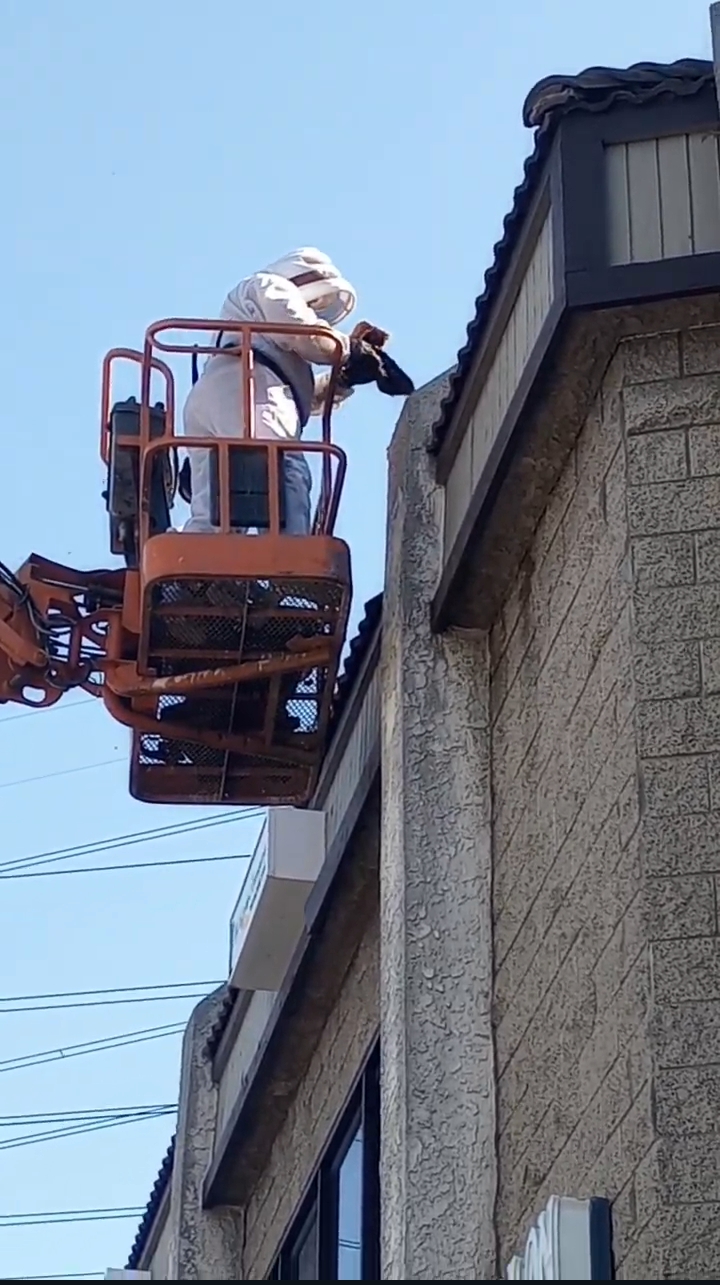
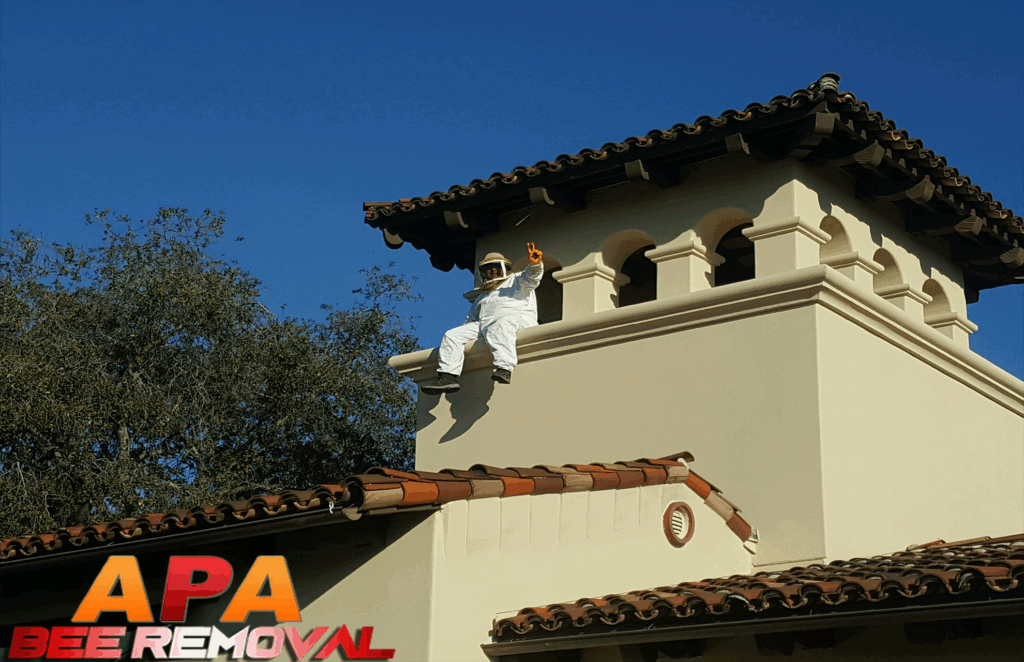
Our Services
APA Bee Removal provides professional, humane beehive removal services throughout the San Gabriel Valley, including El Monte, West Covina, Pasadena, Glendora, and surrounding areas. We specialize in structural beehive extractions from roofs, attics, walls, sheds, and chimneys — even in hard-to-reach places. Our services include live bee swarm removal & relocation (starting at just $199), bee-proofing. For a complete list of our services Click here. Whether you’re dealing with an active bee swarm or a long-standiing beehive inside your home, we can help quickly and at affordable rates. Our eco-friendly approach prioritizes safe removal & relocation – and we’ll beat any reasonable quote.
Beehive Removal
Beehive Removal -We safely remove beehives from your property — whether they’re visible or hidden inside walls, attics, or roofs. Our team ensures complete hive extraction and cleanup to prevent future infestations.
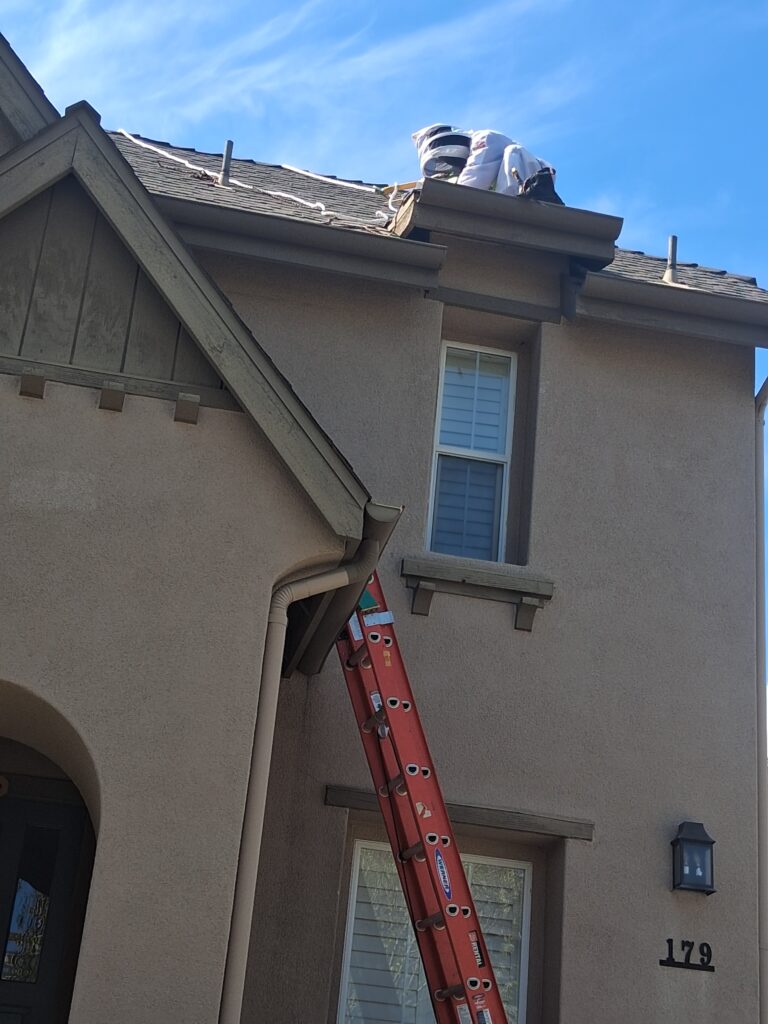
Structural Beehive Removal & Repair
Specializing in hard-to-reach hives, we remove bees from inside roofs, walls, ceilings, sheds, and chimneys. We handle everything from cutting access to clean-up and repairs — all in one visit.
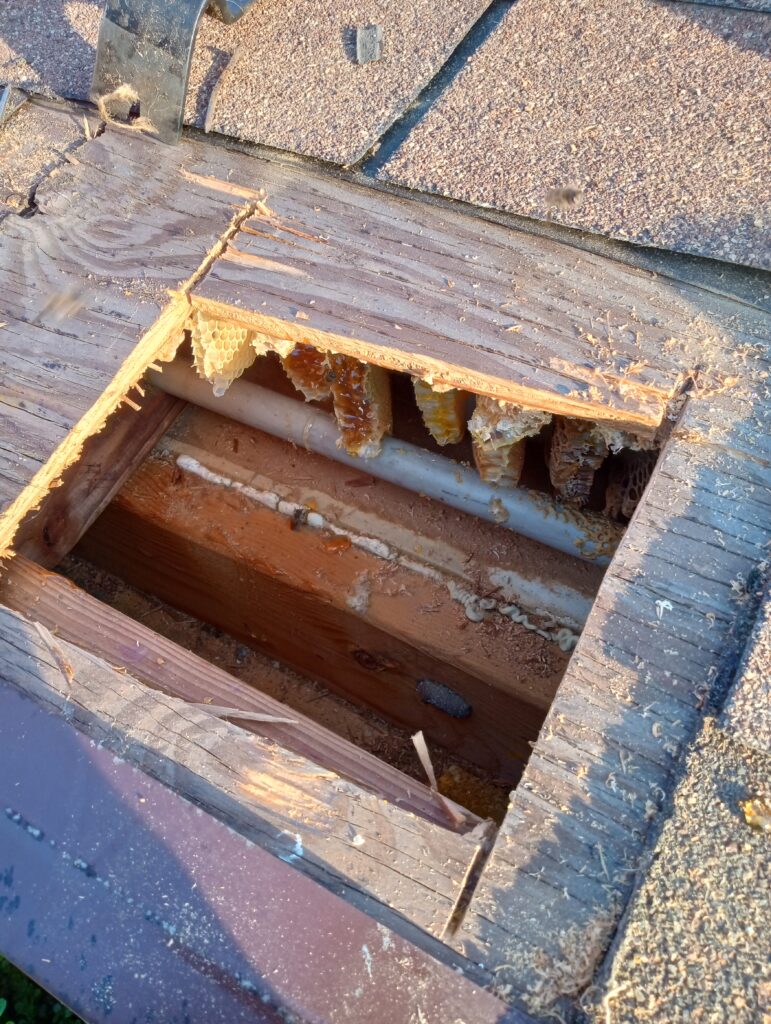
Live Bee Swarm Removal & Relocation
Live Bee Swarm Removal & Relocation If you see a ball of bees on a tree, fence, or structure, that’s a swarm! We offer flat-rate live bee swarm removal starting at $200, relocating the colony safely to a local beekeeper whenever possible.
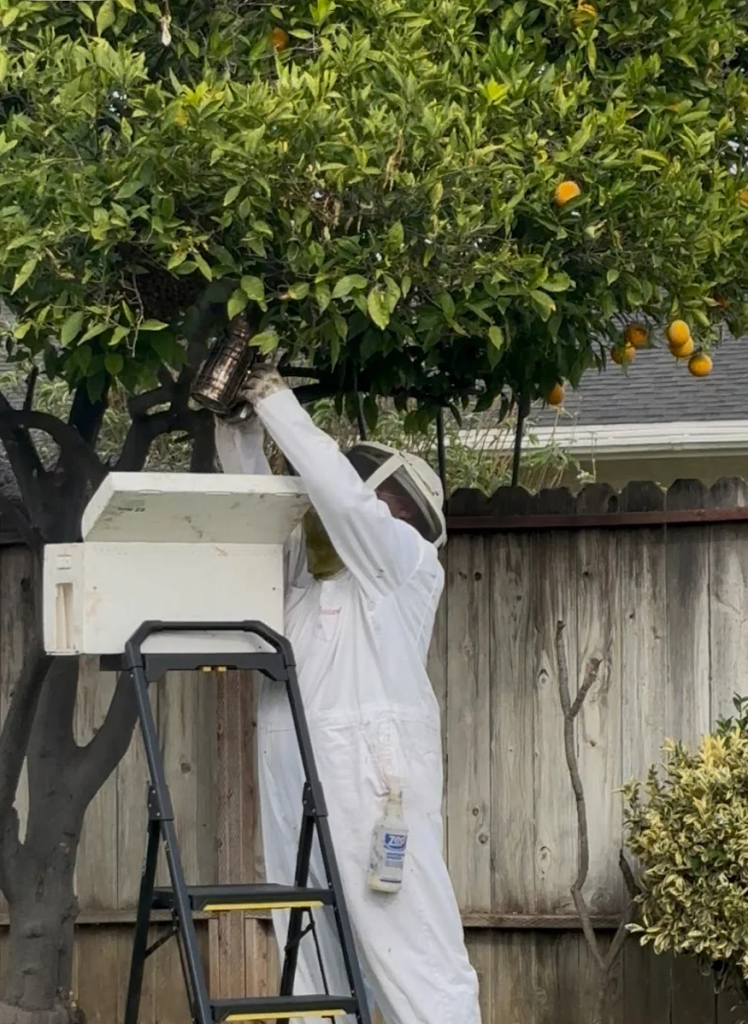
The quote we give you over the phone is the price you will pay! No Added Or Hidden fees!
What Our Customers Say
EXCELLENTTrustindex verifies that the original source of the review is Google. On May 26, 2025, we saw a bee swarm in our orange tree.. called this company and they were out to our house within hours to remove it.. he was so nice and professional.. as of this morning no more bee.. hats off look at the size of the bee swarm Thank you so muchTrustindex verifies that the original source of the review is Google. He was great. Very professional friendly, and kept us informed of everything he had to do He worked fast and got the job done in about two hours Would definitely use them againTrustindex verifies that the original source of the review is Google. Called them at one in the morning. They were here within an hour. Quick service friendly will definitely use them again.!Trustindex verifies that the original source of the review is Google. Had great experience with this company great customer serviceTrustindex verifies that the original source of the review is Google. Gracias a APA BEE. REMOVAL me ayudaron con una colmena que tenía dentro de la pared de mi casa son gente muy buena y profesional los recomiendo muchoTrustindex verifies that the original source of the review is Google. Alex is amazing, knowledgeable, efficient, and handled bees swiftly. Removed 50 pounds of honey comb and honey.Trustindex verifies that the original source of the review is Google. Great service at a reasonable price. Alex is super professional and friendly. For our roof top, he had to rent a lift to do the job, The price was reasonable and did a fantastic job putting back the roof. They seem to be really busy, so have a little patient.Trustindex verifies that the original source of the review is Google. Went on vacation for 1.5 weeks and discovered that my trash bin became a home to a hive of bees. Immediately, shopped around for any bee removal services and many around the area charged $300+ for live bee removal. That’s when I came across APA called them up the next morning and they came 3 hours later to remove them. After all that Cecilia only charged me $185.Trustindex verifies that the original source of the review is Google. Prompt service. Quick response. My bee removal was completed about 3 hrs after I called on a Sunday morning. Will definitely recommend. Thank you.Trustindex verifies that the original source of the review is Google. Great customer service! Fast, efficient and great price too! Highly recommend!

Our 2-Year Guarantee
Peace of Mind, Guaranteed Bee Removal.
At APA Bee Removal, we stand behind our work. That’s why we offer an exclusive 2-year written guarantee, the only one of its kind in the area. If bees return within two years of our service, we’ll come back and take care of the problem at no additional cost to you.
- Comprehensive Protection: Our guarantee covers complete bee removal and prevention.
- No Hidden Costs: If bees return, we handle it, free of charge.
- Unmatched Confidence: We're confident in our methods and expertise.
- Customer Satisfaction: Your peace of mind is our top priority.
Why Bee Removal Is Important
Are you noticing bees entering through a small crack just under the eaves of your roof? Or how about bees darting in & out of a hole in your wall? These are examples of a full beehive inside the structure of your home. The longer the beehive stays there the larger the beehive gets, and to remove becomes costly due to the size of the beehive and the repair cost. Many homeowners notice they have a beehive and wait until it becomes a problem. Normally the bees are stinging everyone that passes by. Or they stung the gardeners, pool guys, or the neighbors. Unfortunately, bee removal is not a DIY project that homeowners can take care of on their own. This is why it is important to call us at (626) 336-1373 if you suspect you have a beehive so that we can safely remove the beehive for you. Below are the top reasons why bee removal is important.
Immediate Risks & Damage
- Melting honey and wax
- Odors and rot
- Bee aggresion
- Pest attraction
- Repeat infestations
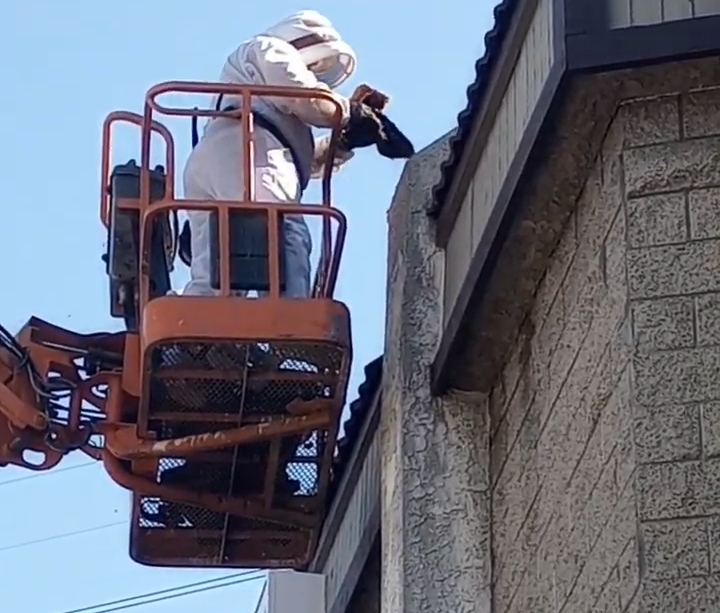
Why Customers Call Us When Others Fail
Many of our customers come to us after another company couldn’t get the job done right. The truth is, most pest control companies are not trained or equipped to remove full beehives from inside walls, roofs, or attics. They may simply spray the bees or apply repellents, leaving the entire hive — and the problem — behind. This often leads to bees returning, lingering odors, melted honey, and structural damage.
We also hear from homeowners who hired a “beekeeper” thinking it would be a safe solution, only to realize that being a beekeeper doesn’t mean someone has the tools or experience to cut open stucco, siding, or shingles without causing major damage. Structural bee removal requires precision — knowing how to locate the hive using sound, heat, or visual cues, and opening the area in a way that minimizes cuts, cost, and cleanup.
At APA Bee Removal, we specialize in this exact type of work. We don’t guess — we pinpoint the hive’s location so we can access and remove it with minimal damage. Then we clean out all honeycomb, seal the area, and offer a written 2-year guarantee so you know the problem is fully resolved.

Structural Removal and Repair
Here’s where we stand out. Most bee removal companies will tear into your wall to get the bees and leave you to figure out repairs. Not us.
At APA Bee Removal, we do structural repair in-house . Whether it’s roof shingles in Temple City, drywall in Monrovia, or eaves in Baldwin Park, we handle structural repairs. No chasing a contractor. We restore it like it never happened. Repairs are included in your estimate — no surprises.
Beehive Removal Structural Repair Included
Worried about bees in your roof, attic, wall, or chimney? You’re not alone — many homeowners across Pasadena, El Monte, West Covina, Glendora, and the entire San Gabriel Valley face unexpected infestations every year. At APA Bee Removal, we specialize in removing hidden hives from structures — safely, humanely, and without shortcuts. We’re available 24/7 for same-day service, and we back our work with the only 2-year written guarantee in the industry.
Why Beehives That Are In The Roof Are a Problem
Bees often enter through vents, gaps in shingles, or small openings under eaves. Once inside, they can build massive hives between rafters, insulation, or under roofing paper. These hives can:
- Soak your insulation with honey
- Cause drywall staining or sagging ceilings
- Attract ants, rodents, or mold
- Lead to expensive roof and attic repairs
That’s why complete removal and filling in the cavity is key—not just spraying bees and walking away.
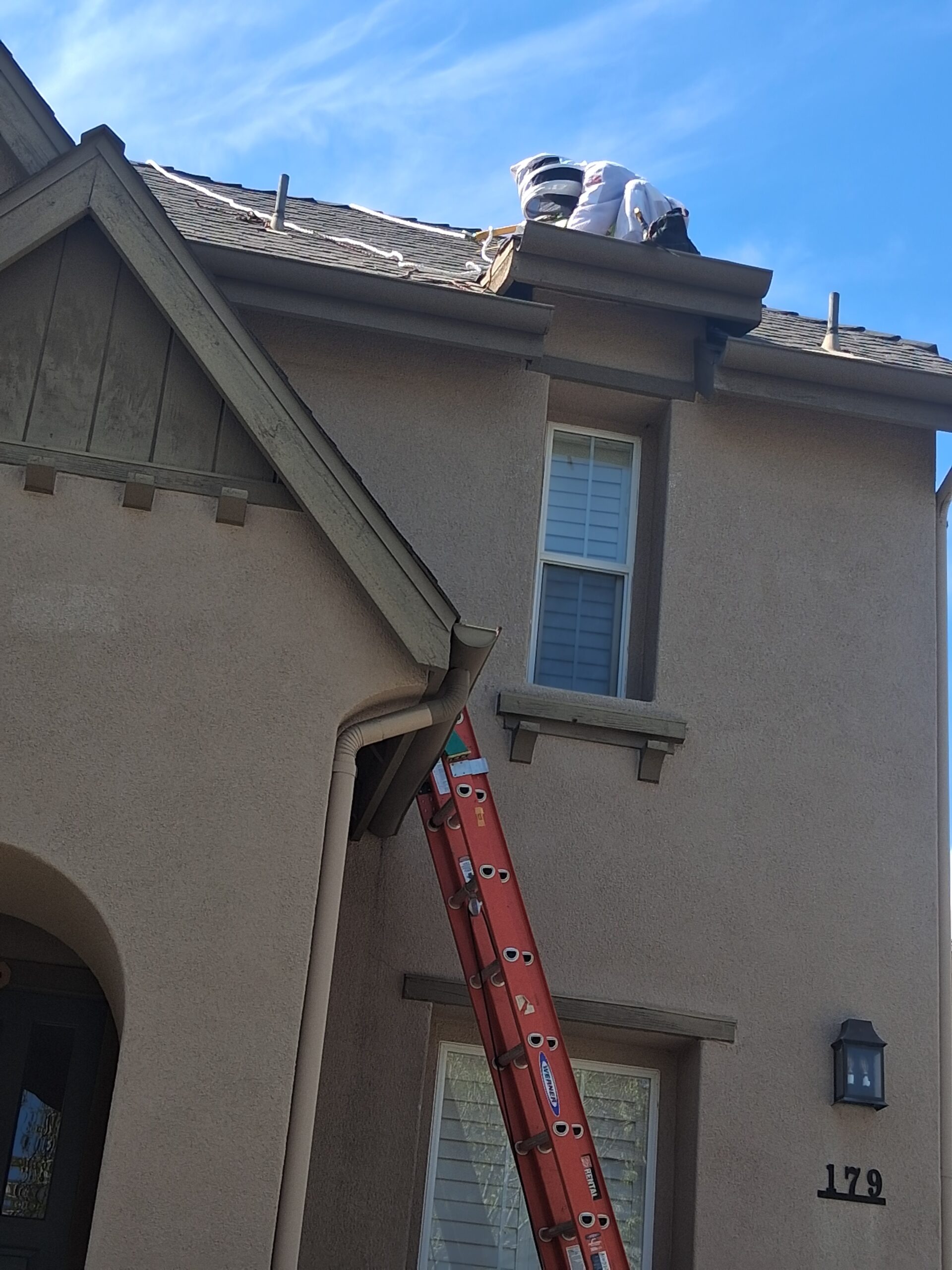
Our Roof Beehive Removal Process
Here’s what you can expect from APA Bee Removal:
1. Inspection
We start by inspecting the roof and attic using thermal imaging and sound detection to locate the hive.
2. Careful Roof Access
tgWe’ll carefully lift shingles, cut into roofing paper, and access the cavity containing the hive. We never damage more than necessary and always document the work with photos.
3. Full Hive & Honeycomb Removal
We remove bees live whenever possible and safely relocate them to local beekeepers. We then remove all honeycomb and clean the area with an enzyme wash to break down leftover scents.
4. Repair & Sealing
We reseal the roof, replace roofing felt or shingles, and seal all bee entry points so they don’t return.
Worried about bees in your roof, attic, wall, or chimney? You’re not alone — many homeowners across Pasadena, El Monte, West Covina, Glendora, and the entire San Gabriel Valley face unexpected infestations every year. At APA Bee Removal, we specialize in removing hidden hives from structures — safely, humanely, and without shortcuts. We’re available 24/7 for same-day service, and we back our work with the only 2-year written guarantee in the industry.

Affordable Bee Removal Plans
Basic Bee Removal
$225
Full Hive Removal & Repair
Complete removal and property restoration
Starting at $450
Maintenance & Prevention Package
$150/month
Areas We Service
- Arcadia
- Alhambra
- Azusa
- Baldwin Park
- Covina
- Diamond Bar
- Duarte
- El Monte
- Valinda
- Irwindale
- La Puente
- Monrovia
- Monterey Park
- Pasadena
- Rosemead
- San Dimas
- San Gabriel
- San Marino
- Sierra Madre
- South El Monte
- South Pasadena
- Temple City
- Walnut
- West Covina
- Montebello
- South Gate
- Bell Gardens
- Downey
- Pico Rivera
- West Covina
- Whittier
- La Habra
- Bradbury
- Glendora
- La Mirada
- Avocado Heights
- City of Industry
- Rowland Heights
- Charter Oak
- Santa Fe Springs
- Hacienda Heights
- North El Mionte
Get in Touch
Contact APA BEE REMOVAL Today
Reach out to our expert team for immediate bee removal and property restoration services.
Email Us
Send us an email at info@apabee.com for inquiries or quotes. We respond promptly to all requests.
Call Us
Call our friendly staff at (626) 336-1373or same-day bee removal and consultation.
Text Us
Click Here

We have a fast response time and offer emergency call outs in weekends and after hours.
BEE REMOVAL SAFETY CONCERNS
We strongly urge you NOT to disturb any bees that have created a hive. If you notice bees have been scouting around for a few days, there is a chance they may leave on their own. However, if they decide to bring the entire colony, then you’ll need to have our bee removal experts address the problem as soon as possible to minimize property damage.
Bee swarms are very common and can, in some cases, resolve themselves without intervention. Bee swarms are a colony of bees which protect the queen until the scout bees find a good place to make a hive. If no ideal hive location is found, the swarm will then take up residence where they are. The process usually takes about 1-3 days. So, if the swarm you notice is three days or less, you may want to wait to see if the bees decide to stay put or leave. When in doubt, call us.
APA Bee Removal specializes in ONLY bees, wasps, and yellow jackets. In doing so, we’ve become a sort of “bee whisperer” and understand HOW bees think. Our technicians know not only how to remove bees most safely and humanely, but also how to help prevent future infestation.
For more answers to your questions, click here for our FAQ
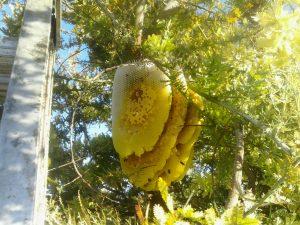

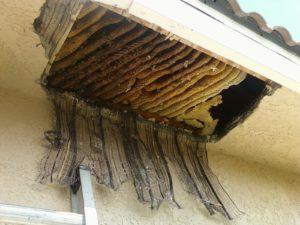
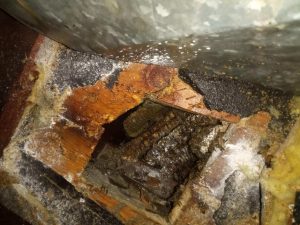




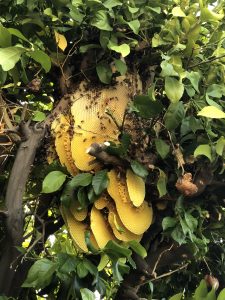



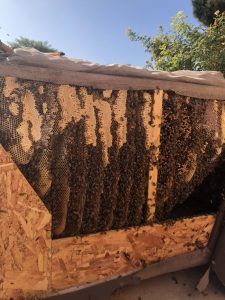
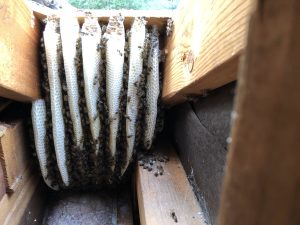
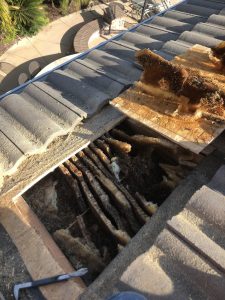
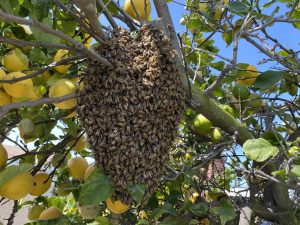
The Most Common Questions
If a beehive is left behind, the smell of it will attract bees back to the area for years to come. If a typical size beehive is abandoned and is located in an attic or wall, once the bees have departed, the honey will completely melt out of the comb and will destroy drywall, stucco, siding, paint, etc. The abandoned beehive will then attract other pests such as ants and rodents.
We always try to remove bee swarms live. The following list are attributes of a bee problem that allow us to remove the bees in a humane way.
1. The bees are not aggressive and in swarm or early hive formation.
2. The bees are easily accessible and are clustered out in the open and not inside a structure.
3. We are able to place them with a beekeeper in our Network.
We perform exceptional bee removal repairs. With over 20 years of construction experience, by the time we are done with any structural repairs from your bee removal, you wouldn’t even know you had a beehive.
The cost of bee removal varies depending upon a number of factors. There are three main factors that can effect the cost of a job.
1. The first is the length of time the problem has been going on. If you have a swarm it is less expensive to resolve than if you have a hive. A swarm is a collection of bees that has just landed and is looking to build a hive. A fully established hive can be built in only a couple weeks, so fixing the problem quickly (before the swarm has built a hive) is much less expensive than if a hive has already been established.
2. The second factor that influences the price of a job is where the bees or hive is located. Is it in a tree at eye level that is easy to get to? Or is it 25 feet up in a palm tree? Does it require a ladder? Is it on a hillside or up a steep slope? Do you need to crawl under a structure to get to it? Do you need a boom lift or heavy equipment to reach it? All of these factors dictate the difficulty and price of the job.
3. The third main factor is what materials and tools will be needed to remove the hive? Is the hive in a 3nd story wood shingle roof or a single story Spanish tile roof? Are the bees inside an irrigation box in the ground where the lid can be lifted easily? Or are they inside a concrete wall that needs to be demolished in order to get to the hive? Are the bees in a stucco wall, a wood wall, or a type of wall that has special masonry? All of these examples can effect the cost of the hive removal.
As soon as you spray bees with chemical pesticides it kills the honeybees but the honey and honey comb are left behind for rodents and pests to feed on and contaminate the area with their droppings. Another reason is that more bees can often occupy the beehive and you have another live beehive on your hands. That’s why it’s critical that the entire beehive and honeycomb are removed from your property.
In the case of a Swarm, usually YES. A swarm of bees may stop to rest on just about anything during the migratory process and leave between 1 and 72 hours later. The swarming season occurs mostly during Spring and Fall, but it can occur at other times of the year as well. Established Colonies will NOT leave once they have set up housekeeping except in extenuating circumstances. Bees may choose various hollow cavities to set up colonies such as your roof, eaves, wall voids, water meter boxes, even a BBQ grill or a birdhouse. It only takes bees about 72 hours to start producing honey and combs once they move in.
Bees need water just like we do. They will gather at swimming pools, ponds, and water coolers in order to find it. Water-collecting bees are docile just as when they are foraging for pollen and nectar. Bees will also communicate to their colony where the best sources of water are so when they find a good spot they are likely to return repeatedly. The only way to rid your property of foraging bees is to take away the water or food source they are coming to. They will become discouraged and go elsewhere. This can be fairly easy with fountains and birdbaths, but not so easily done with an entire pool.
Bees are only dangerous when they are defending their colony: nest, honey and brood. They are not dangerous when foraging for pollen, collecting water, nor typically when swarming. This means that it is important to check the area around your home for wild colonies of bees, as they can be easily disturbed and will defend themselves. If you or your pets have been stung by bees and believe you are having an allergic reaction consult a health care professional immediately.
Unfortunately it can. Bees are very resourceful and can find the trickiest places to build their hives. If they are in your wall space or the crawl space in your house, we will need to gain access by cutting into the structure to effectively remove all remnants of the hive.
You can’t! It requires DNA testing and elaborate measurement tests in order to distinguish the two. The Africanized bee has hybridized with the more friendly European bees that beekeepers brought here first. These hybrids exhibit characteristics of both, and the behavior of a hive can drastically change without warning. Their behavior is NOT an accurate tool to determine whether they are Africanized! You should always just give all bees you encounter the respect you’d give any wild creature.
If you have any other questions call us at(626) 336-1373 or just click on the button below

